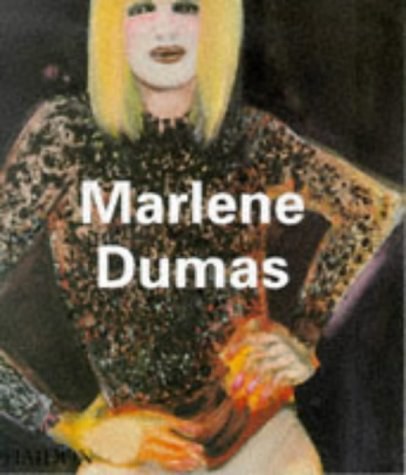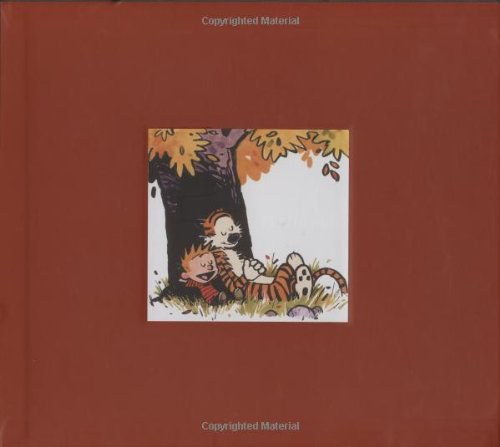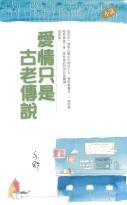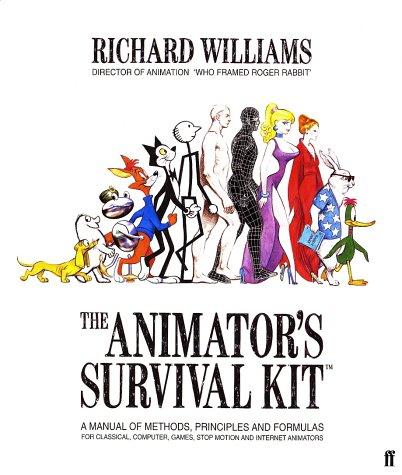
slide:ology
书刊介绍
内容简介
Praise for slide:ology
Copyright
Dedication
Acknowledgments
Foreword
Introduction
Chapter 1. Creating a New Slide Ideology
建立全新的幻灯理念
Section 1.1. Don't Commit Career Suislide
不要委托职业的幻灯制作者
Section 1.2. A Case for Presentations
一个演示案例
Section 1.3. So Where Do You Begin?
从哪里开始?
Section 1.4. Case Study: Mark Templeton
案例研究:
Section 1.5. The Presentation Ecosystem
演示系统
Section 1.6. World Class Presentations Require Time and Focus
世界级的演示要求时间和焦点
Section 1.7. Responding to Audience Needs
响应听众需求
Section 1.8. How Do You Define Your Audience?
如何定义你的听众
Section 1.9. Case Study: Rick Justice Creating Great Presence
案例研究:
Section 1.10. Case Study: ZS Associates An Incentive to Communicate Clearly
案例研究:ZS
Chapter 2. Creating Ideas, Not Slides
建立理念,而不是幻灯
Section 2.1. Finding Your Inspiration
找到灵感
Section 2.2. Innovating with Sticky Notes
使用即时贴创新
Section 2.3. Case Study: Bill McDonough
案例研究:
Section 2.4. Sketching Your Way to Success
画出成功之路
Section 2.5. Collaborating to Get Clarity
??清晰
Section 2.6. Case Study: Mitchell Baker
案例研究:
Section 2.7. Sketching Ideas Using Diagrams
使用图解描绘概念
Section 2.8. Sketching Complete Ideas
描绘完整的概念
Chapter 3. Creating Diagrams
创建图解
Section 3.1. Classifying Diagrams
图解分类
Section 3.2. Abstract Concepts: Flow
抽象概念:流程
Section 3.3. Abstract Concepts: Structure
抽象概念:结构
Section 3.4. Abstract Concepts: Cluster
抽象概念:聚集
Section 3.5. Abstract Concepts: Radiate
抽象概念:发散
Section 3.6. Realistic Concepts: Pictorial
形象概念:插画
Section 3.7. Realistic Concepts: Display Data
形象概念:显示数据--与图表相关的内容
Section 3.8. Making Diagrams Work Together
综合运用图解
Section 3.9. Strengthening the Diagram's Concept
强化图解概念
Chapter 4. Displaying Data
显示数据--本章讲统计图表
Section 4.1. Following the Five Data Slide Rules
五条数据幻灯原则
Section 4.2. Telling the Truth
说出事实
Section 4.3. Getting to the Point
说出重点
Section 4.4. Picking the Right Tool for the Job
使用正确的工具
Section 4.5. Highlighting What's Important
强调重要的
Section 4.6. Chart Makeovers
图表美化
Section 4.7. Case Study: Healthy Waters
案例研究:
Chapter 5. Thinking Like a Designer
象设计师一样思考
Section 5.1. The Value of Design
设计的价值
Section 5.2. Revealing Yourself Through Design Decisions
??设计决策
Section 5.3. Case Study: Al Gore
案例研究:Al Gore(美国前副总统)
Section 5.4. Designing Effective Slides
设计有效的幻灯
Chapter 6. Arranging Elements
安排元素
Section 6.1. Placement of Elements Creates Meaning
元素的位置有意义
Section 6.2. Contrast: Identifying the Main Point Quickly
对比:快速识别主要点
Section 6.3. Flow: Ordering How the Information Is Processed
流程:排序信息处理流程
Section 6.4. Hierarchy: Seeing Relationships Between Elements
层次:发现元素之间的联系
Section 6.5. Unity: Sensing the Structure of Information
联合:了解信息结构
Section 6.6. Case Study: Adobe Controlling
案例研究:
Section 6.7. Proximity: Perceiving Meaning from Location
就近:感知位置意义
Section 6.8. Whitespace: Getting Visual Breathing Room
留白:留下视觉上的喘息空间
Section 6.9. Case Study: Garr Reynolds
案例研究:Garr Reynolds(演示之禅的作者)
Section 6.10. Finding Beauty in the Design Around You
发现身边的设计之美
Chapter 7. Using Visual Elements: Background, Color, and Text
使用视觉元素:背景,颜色,文本
Section 7.1. The Ingredients of a Great Slide
卓越幻灯的要素
Section 7.2. Background
背景
Section 7.3. Backgrounds Are a Surface for Digital Assets
背景是数字资产的外表
Section 7.4. Traversing Flatland and Dimensions
??平面和维度
Section 7.5. Creating a Sense of Space
建立空间感
Section 7.6. Determining the Light Source
决定光源
Section 7.7. Color
颜色
Section 7.8. About the Color Wheel
色彩轮
Section 7.9. Using the Power of Color
使用颜色的力量
Section 7.10. Choosing Your Colors
选择你自己的颜色
Section 7.11. Using Industry Color Palettes
使用行业颜色板
Section 7.12. Assembling a Color Palette
配置颜色板
Section 7.13. Case Study: BzzAgent
案例研究:
Section 7.14. Text
文本
Section 7.15. Dissecting a Font
解剖字体
Section 7.16. How Many Words Should Be on a Slide?
一张幻灯上多少字
Section 7.17. Typesetting
排版
Section 7.18. Typesetting a Block of Text
排版大量文字
Section 7.19. Obeying Gun Laws and Bullet Laws
遵从??原则
Section 7.20. Validating Your Font Size
验证字体大小
Section 7.21. Playing Text Animations as the Audience Enters
使用文字动画
Chapter 8. Using Visual Elements: Images
使用视觉元素:图片
Section 8.1. Assembling an Image System
配置图片系统
Section 8.2. Photography
摄影
Section 8.3. Case Study: School District
案例研究:
Section 8.4. Taking Your Own Photos
使用自己的照片
Section 8.5. Illustrations
插图
Section 8.6. Creating an Illustration Library
建立插画库
Section 8.7. Illustrating Complex Stories
图解复杂的故事
Section 8.8. Stylizing Diagrams and Illustrations
风格化图示和图解
Section 8.9. Case Study: Dr. Mike Magee
案例研究:
Section 8.10. Case Study: Incorporating Video
案例研究:
Chapter 9. Creating Movement
建立运动
Section 9.1. Designing Time-Based Scenes
设计基于时间的场景
Section 9.2. Planning Animations
计划动画
Section 9.3. Animating Serves a Purpose
动画服务于目标
Section 9.4. Taking Lessons from the Movies
从电影学习
Section 9.5. Making Objects Move and Change
让对象运动和改变
Section 9.6. Creating Panoramas and Scenes
建立全景图
Section 9.7. Creating Scenes, Not Slides
建立场景,而不是幻灯
Section 9.8. Case Study: Guerrino De Luca
案例研究:
Section 9.9. Brainstorming Meaningful Metaphors
头脑风暴有意义的隐喻
Section 9.10. Case Study: Rare
案例研究:
Section 9.11. Avoiding Visual Vertigo
避免视觉眩晕
Chapter 10. Governing with Templates
用模板管理
Section 10.1. Arming Your Workforce
武装你的工作人员
Section 10.2. Making Template Design Decisions
制定模板设计原则
Section 10.3. Case Study: Hewlett-Packard
案例研究:HP
Section 10.4. Experimenting with Various Looks
尝试不同的外观
Section 10.5. Following Template Guidelines
遵守模板指南
Section 10.6. Building Presentations Collaboratively
协同建立演示
Chapter 11. Interacting with Slides
与幻灯交互
Section 11.1. The Power of Constraints
约束的力量
Section 11.2. Constraining the Text
约束文字
Section 11.3. Reducing Text on a Slide
减少文字
Section 11.4. Navigating Through Your Message
导航你的信息
Section 11.5. Constraining the Length
控制长度
Section 11.6. Case Study: Pecha Kucha
案例研究:
Section 11.7. Constraining the Projector
控制投影仪
Section 11.8. All the World's a Stage
世界的舞台
Section 11.9. How Many Slides? Use the 10/20/30 Rule.
多数张幻灯?10/20/30原则
Section 11.10. How Many Slides? The Sky Is the Limit.
多数张幻灯?天高任鸟飞
Section 11.11. How Many Slides? Depends on the Technology.
多数张幻灯?看使用的技术
Section 11.12. To Project or Not to Project
投影还是不投影
Section 11.13. Case Study: John Ortberg
案例研究:
Section 11.14. Small Device, Big Impact
小设备,大印象
Section 11.15. Case Study: Jill Bolte-Taylor
案例研究:
Section 11.16. A Call to Relate
??
Chapter 12. Manifesto: The Five Theses of the Power of a Presentation
纲领:5个观点
Section 12.1. Treat Your Audience as King
以听众为中心
Section 12.2. Spread Ideas and Move People
传播理念、感动人们
Section 12.3. Help Them See What You're Saying
让他们看到你所说的
Section 12.4. Practice Design, Not Decoration
学习设计,而不是装饰
Section 12.5. Cultivate Healthy Relationships
加强有益的联系
References
Index
作者简介
Nancy Duarte,Duarte设计公司领导者。该公司是硅谷最大的设计公司,也是一家女性主导的公司。它的客户大多是财富500强企业,如Adobe,思科,Google和惠普。Duarte设计公司被公认为是演说设计领域的领头羊。
精彩摘录
3secondrule-Askyourselfwhetheryourmessagecanbeprocessedeffectivelywithinthreesecondssotheaudiencecouldreturntothepresenter.Ifaslidecontainsmorethan75words,ithasbecomeadocument.Presentationwith50orsowordsperslideserveasateleprompter.Truepresentationsfocusonthepresenterandthevisionaryideasandconceptstheywanttocommunicate.*Don'tanimateyourtextunlessitaddsvalue,meaning,oremotiontothecontent.*HoldingdowntheShiftkeyandthenpressReturncreateslinespacing.Thisiscalledasoftreturn.ThemainmessagewasthattherearethreeeasywaystoinstallJavelin.Toavoidconfusion,it'sbettertosplitthecontentacrossmorethanoneslide.Mostapplicationshaveapushtransition.Whenapplied,theentireslide...
——引自章节:Thewholebook
Insteadofusingsidesloadedwithbullets,experimentwithavisualapproach.Keepgraphicsextremelysimple.Gunsdon'tkillpeople,asthesayinggoes,butBULLETSkillplenty!*Agoodruleofthumbforfontsizeistodividetheoldestinvestor'sagebytwo,andthenusethatfontsize.-GuyKawasakiUsethefollowingfiveprinciplestopresentyourdataintheclearestpossibleway.1Tellthetruth2Gettothepoint3Picktherighttoolforthejob4Highlightwhat'simportant5KeepitsimpleYoucancreategraphicsineithera2Dor3Dspace.Butonlypickone.Minimizingdepthminimizescomplexity.Keepthelightingsourceconsistent.UsingthePowerofColorMonochromaticAnalogous*Complementary-providethemostcontrast,givingpower,butonlytwocolors*Splitco...
——引自章节:Thewholebook
相关推荐
-

大作家写给孩子们:幸运鹦鹉
内容简介“大作家写给孩子们”系列丛书精选世界文学名家所编著的儿童文学作品,旨在为国内孩子提供接近经典,易于阅读、开拓视野的文学读物。本书是英国著名女作家伍尔芙为...
-

B·G·Mirkin《Mathematical Classification and Clustering》
Thegoalofthistextisthreefold;first,toserveasareferencefortheenormousamountofexis...
-

祈莫昕《一分钟打动人心》
《一分钟打动人心:人际关系中的心理策略》集结了古今中外各类风云人物在人际交往中的事例,详加分析他们对于心理操纵术的运用,将
-

怪鸟
傅星,《萌芽》杂志前执行主编,中国作协会员,上海作协小说专委会副主任,上海广播影视制作业行业协会编剧专委会副主任。著有小说集及长篇《大地的仲裁》《魔幻人生》《八...
-

土耳其
被称为业界传奇LoneIy Planet出版公司的创始人托尼.惠勒和莫琳· 惠勒已经出版了很多的旅行指南,这些指南覆盖了这个星球的每一个国家。Lonely Pl...
-

劳动关系政策及常见问题问答
劳动关系政策及常见问题问答 本书特色 2012年是落实“十二五”规划承上启下的一年,是政府“能力建设年”。西城区人力资源和社会保障局紧扣“加强能力建设,提升服务...
-

江文瑜《和服肉身》
江文瑜從小構築文學創作的美夢,1998年出版第一本詩集《男人的乳頭》,以前衛風格書寫身體,獲陳秀喜詩獎。2000年以〈阿媽的料理
-

大家学术丛书中国建筑史
大家学术丛书中国建筑史 本书特色 中国建筑史专著,以乐嘉藻所著的《中国建筑史》为*早。乐嘉藻博览群书,广泛收集史籍、照片、印片,以及经、史、子、集四部中有关建筑...
-

朱氏脉诀
朱氏脉诀 本书特色 《名医世纪传媒:朱氏脉诀(第3版)》在第2版的基础上修订而成,以歌诀形式介绍了脉诊的原理、部位、方法、正常脉象、病理脉象,对诊脉的临床运用及...
-

德拉克洛瓦
法国浪漫主义画派的灵魂人物,文学、戏剧、音乐、旅行与历史的交融.◎ 编辑推荐浪漫主义的灵魂人物,19世纪法国画坛的旗手本国经验与东方见闻的绮丽融合,文学、音乐、...
-

李卫平《怎样一眼把人看透》
《怎样一眼把人看透》从衣着打扮、外貌特征、行为举止、言谈话语、生活习惯、兴趣爱好、人际交往等角度,深入探讨了人的内心世界
-

蚂蚁社会
【内容简介】“人像蚂蚁”这个古老的比喻,就像“比喻”本身一样古老。从作家到政治学家、社会学家,人们渴望从蚂蚁身上寻找人类社会的最佳组织形式;从单一的个体到整体的...
-

Martin W·Lewis《Green Delusions》
Scholars,politicians,andactivistsworldwidearefinallyrecognizingtheseverityoftheg...
-

武道狂之詩
劍風怒濤‧武鬥解禁‧狼派英雄出世「我認識不少真實的武者,他們練武,就是因為喜歡──喜歡把技藝練得圓熟的滿足感,喜歡將自我潛能推到極限的存在感。」──喬靖夫喬靖夫...
-

名侦探的咒缚
《名侦探的咒缚》是日本作家东野圭吾的奇幻长篇小说,用悬念与诚意写出了人生的彷徨与抉择。太奇怪了!绕了半天竟然又回到了原点,我不禁脊背发凉。又不是初次来这个图书馆...
-

夏商周考古学
作品目录第一章 绪论 001第一节 夏商周考古的研究对象与学科特点 001一、夏商周考古涉及的时空范围 001二、夏商周时期在技术发展
-

沙漠驼影
1950年生于澳洲昆士兰省的一个乡下小镇。移居悉尼前,曾在布里斯班多所教育机构工作五年。她从悉尼出发到艾丽斯斯普林斯,独自一人展开一场横越澳洲的千里沙漠之行,最...
-

打开心智
李睿秋(Lachel)深度思考践行者,专注于心理学、认知科学与心智研究。虎嗅年度十大作者,36氪特邀作者。开设智识学院,帮助上万人实现思维升级。创办成长类公众号...
-

常用文言虚词
常用文言虚词 本书特色 文言虚词是文言语法的重要组成部分。文言语法的各种现象大都和虚词有关,我国古代学者对语法的探讨多集中在虚词的研究上。文言虚词,从我国传统的...
-

我反对
我反对 本书特色 法律是公平正义的化身,还是政治斗争的权谋工具?1911年起诉的“加州人民诉克莱伦斯·丹诺贿赂案”,成了克莱伦斯·丹诺一生中*富戏剧性、*令人心...





